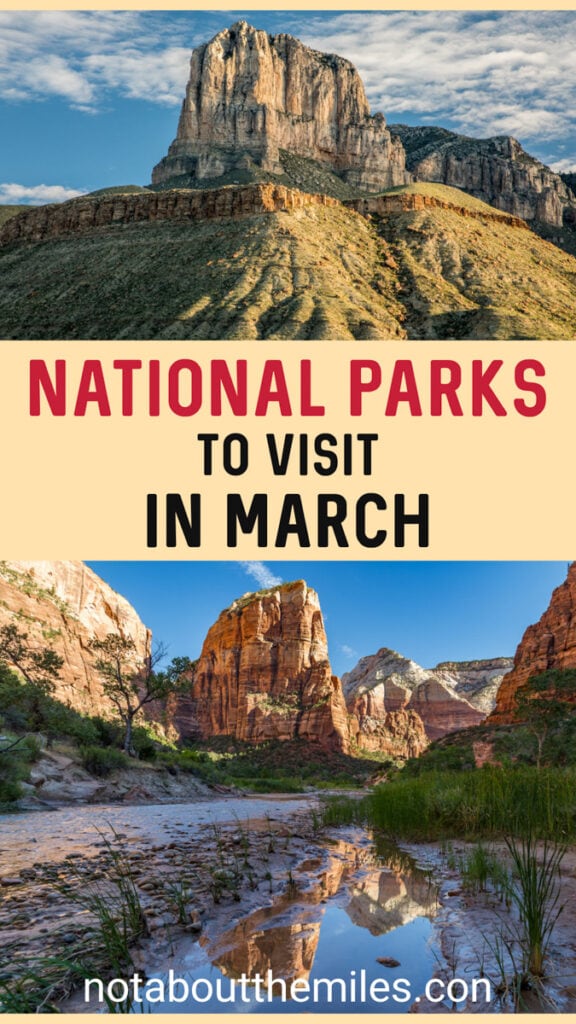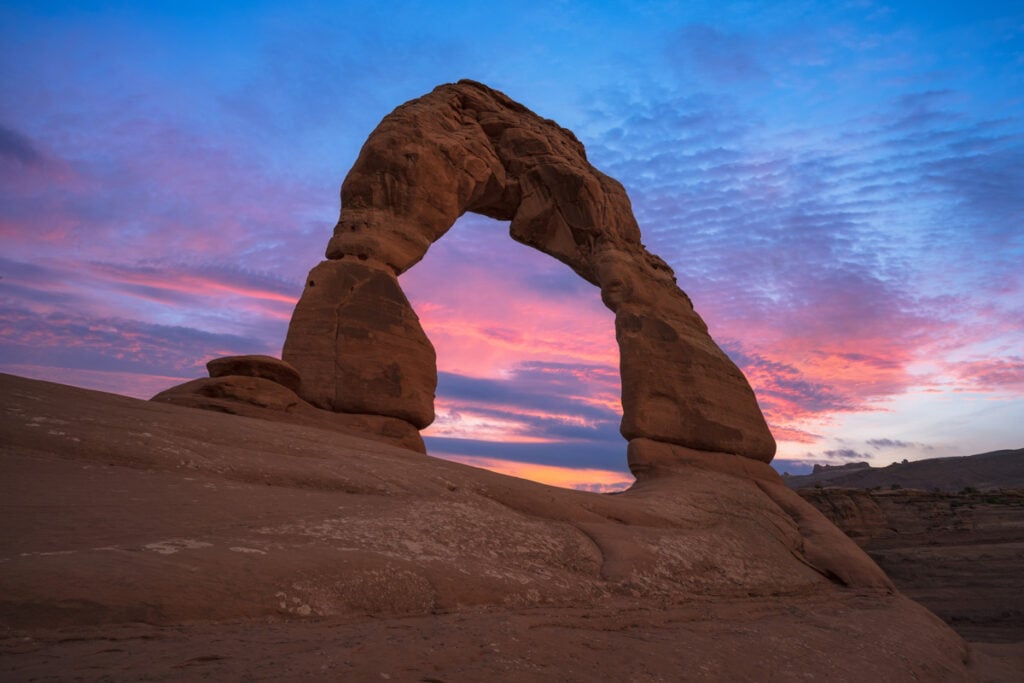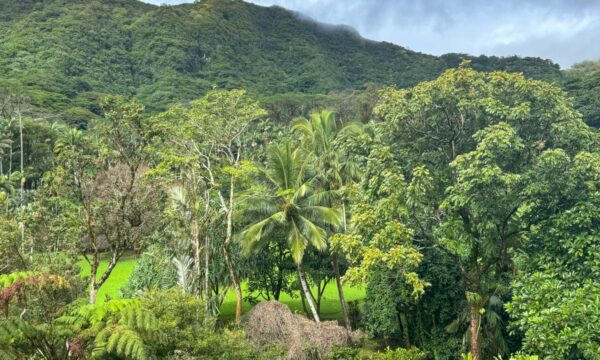Planning a national parks visit in March? We have some wonderful choices for you to consider, with our round-up of the very best national parks to visit in March!
Although some parts of the US begin thawing out in March, the weather is still wintry in many places. If the thought of a warm weather national park, where you can hike in tees, is enticing, consider Joshua Tree in Southern California, or Saguaro National Park in Arizona!
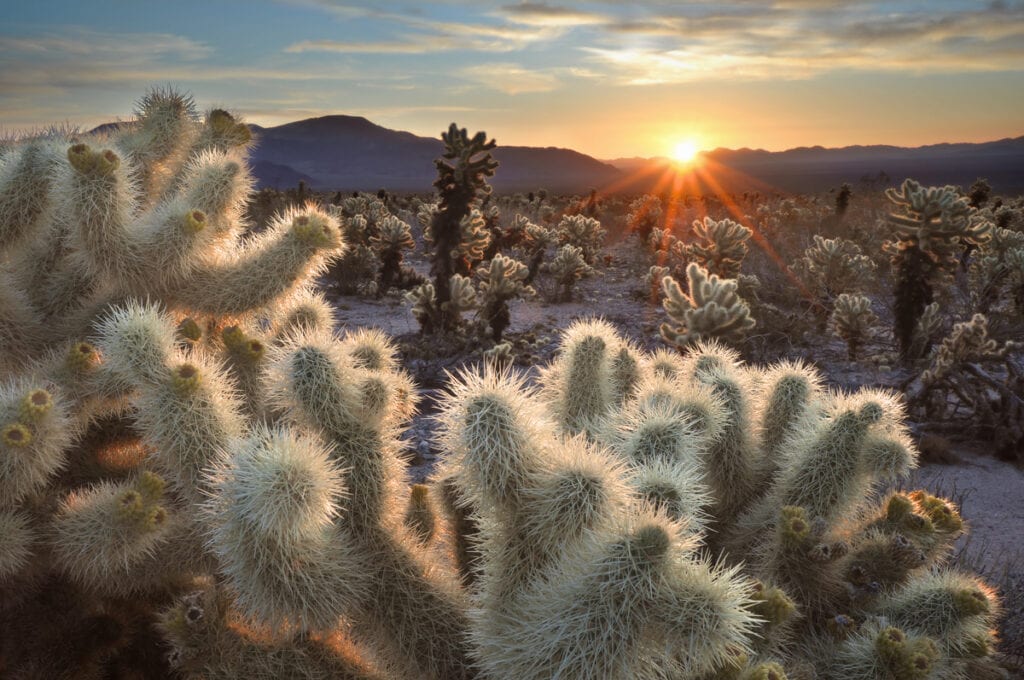
Some links on this page may be affiliate links. If you click an affiliate link and make a purchase, we may receive a small commission, at no extra cost to you. For more details, refer to our disclosure.
National parks in Florida are other great warm weather options for March. And Big Bend and Guadalupe in Texas have mild temperatures in March, perfect for hiking and wandering outdoors.
Parks that tend to get hugely crowded later in the spring and in the summer are good bets for March. Although the weather may be short of ideal, you’ll get to enjoy the parks in relative peace, a trade well worth considering for parks likes Arches in Utah.
Now, let’s get set to discover the best US national parks to visit in March!
1. Hawaii Volcanoes National Park
Location: Big Island, Hawaii
Hawai‘i Volcanoes National Park is a designated International Biosphere Reserve as well as a UNESCO World Heritage Site. It’s one of the best places to visit in Hawaii!
It is also home to two of the most active volcanoes on the planet, Kilauea and Mauna Loa. The park and the surrounding area are also culturally important to the native Hawaiian people.
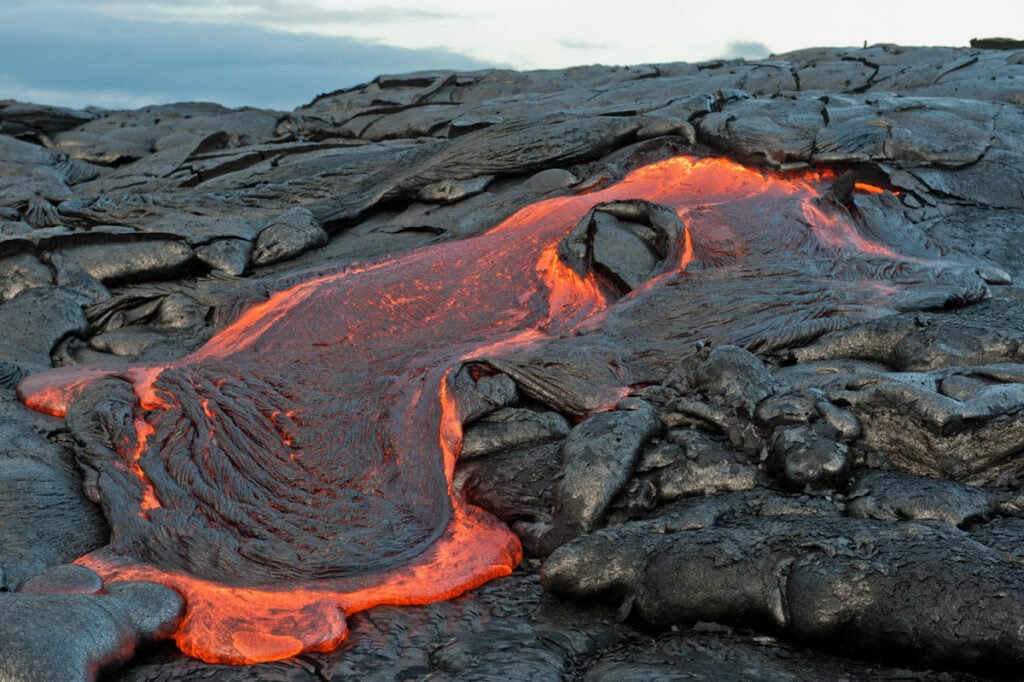
March is a wonderful time to visit Volcanoes National Park as the temperatures are very pleasant, and there are a plethora of activities you can enjoy.
Hawaii Volcanoes weather in March: With average daytime highs in the low 70s Fahrenheit, and nighttime lows in the low 50s, March offers great weather for exploring.
However, be mindful that as you gain elevation, temperatures drop, so at Volcano Village, for example, expect daytime highs around 60 degrees.
March is one of the rainier months, with 20 days of rain forecast on average. However, showers often pass quickly, so even if it rains, it likely won’t ruin your day. And there’s plenty to do even if it rains!
What to do in Hawaii Volcanoes National Park: First, check out Thurston’s Lava Tube. This fun walk will take you through tube-like structures where lava once flowed. It’s very cool!
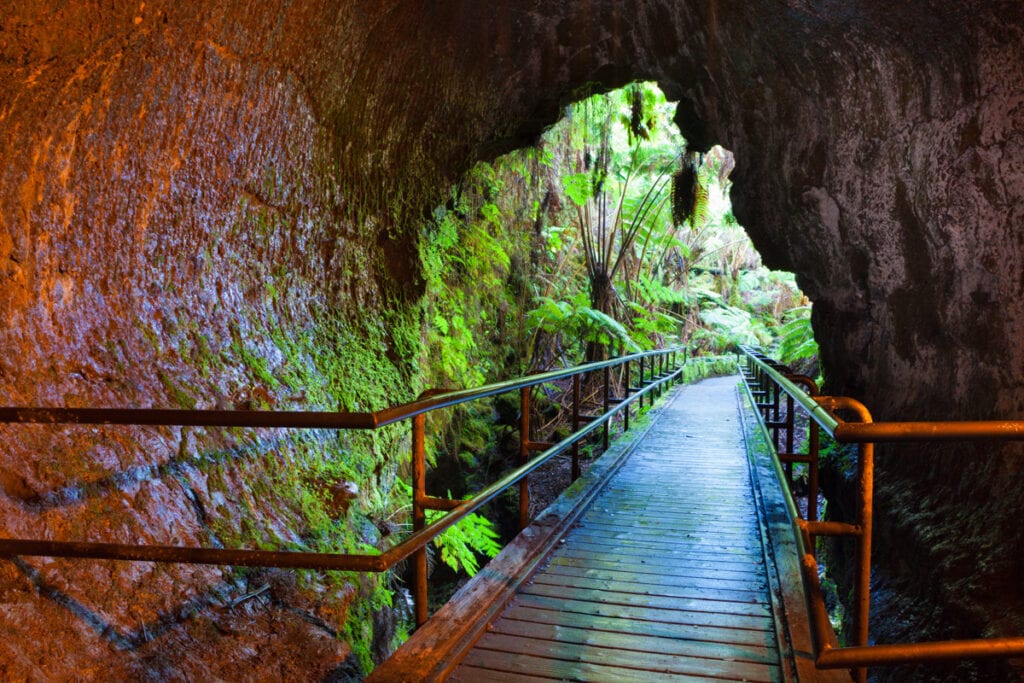
You do need to navigate some steps so keep that in mind if you have limited mobility.
Second, if you are lucky, you can see active lava flow. This is always an amazing experience. Dusk is a popular viewing time, because it’s easier to see the glowing red lava at that time.
Make sure to check with park rangers on recent activity and the best viewing areas.
You can also explore the park by hiking some of its trails. Volcanoes National Park has several trails from which to choose, and they range from easy to challenging.
You can hike to see petroglyphs, get a closer view of the volcanic craters, and more. There are even options for wheelchair users. Check out this post for more information on the accessibility within the park.
Lastly, make sure to take the scenic drives throughout the park. The main drive, Chain of Craters Road, will take you to the ocean, where you can see a sea arch.
There are several overlooks along the way where you can get out and explore old lava fields and read the interpretive panels.
Where to Stay
For a unique and fun experience, you can stay right in the park at the Volcano House. You’ll have views of some of the volcanic craters within the park and it’s perfectly located so you can make the most out of your stay.
Kilauea House is located in Volcano, just a few minutes from the park entrance. Breakfast is rated exceptional, and units include kitchenettes and views of the gardens.
Book a stay here!
Suggested by Kristin of World on Wheels
Planning to visit more than one national park in the next 12 months? Consider buying the America the Beautiful National Parks Pass!
Valid at over 2,000 federal recreation sites all across the USA, the pass covers entrance, standard amenity fees, and day use fees for a driver and passengers in a personal vehicle at areas that charge per vehicle, and for up to four adults at sites that charge per person. Children ages 15 or under are free.
The pass is valid for 12 months from the month of purchase.
2. Arches National Park
Location: Utah
Arches National Park is one of the best national parks in the USA and one of the mighty 5 of Utah!
From experiencing Arches at sunrise to hiking to Delicate Arch, there are many iconic things to do in this popular national park.
Arches National Park is without a doubt one of the best places to visit in Utah.
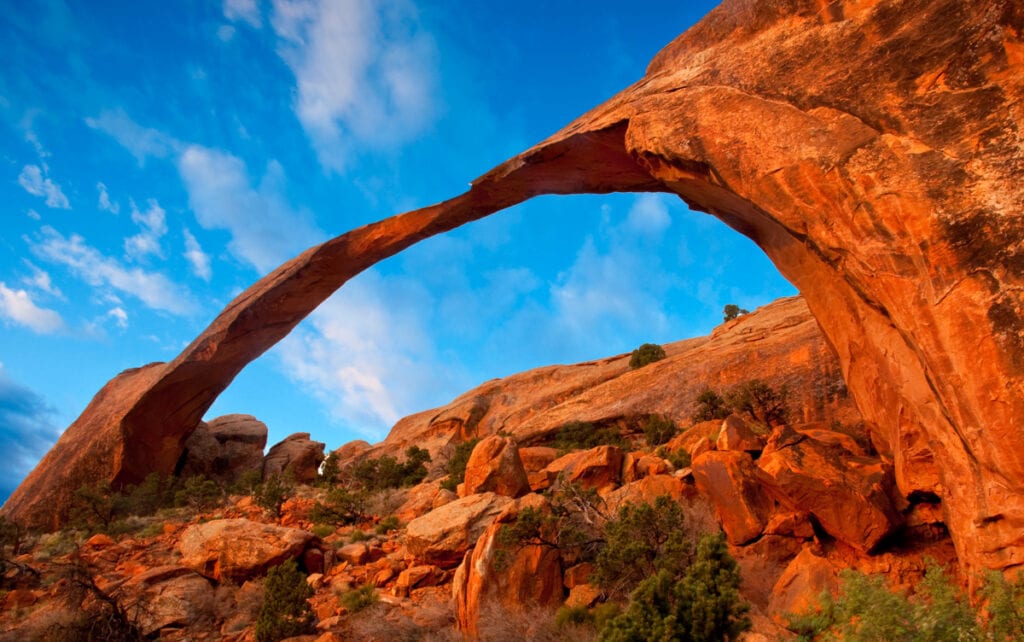
There are many reasons why visiting Arches National Park in March is a great idea. One of the main reasons is crowds. In March, and especially during the first two weeks of the month, the crowds visiting Arches are still small compared to the herds of tourists coming in the summer!
This allows you to take your time visiting without having to rush to “get there before everyone else.” That’s why Arches features on our list of best national parks to visit in February as well!
Note that even during spring break, there are fewer visitors than during the summer.
Another good reason to visit in March is the weather. Arches National Park is in the desert, which means that from May onward, it gets extremely hot during the day, making it a bit of a hassle to hike. In March, the weather is a lot cooler.
Arches weather in March: In March, expect the temperatures in Arches National Park to be cold in the mornings and evenings but comfortable during the day.
With highs averaging around 60°F during the day, it is the perfect weather to hike in Arches National Park.
The average number of days of rain forecast in March is three, so you’ll likely have dry weather during your visit.
What to do in Arches National Park: Be in the park at sunrise! At that time, the light bounces off the ochre color of the arches and other rock formations, and creates an incredible spectacle! In March, sunrise isn’t too early so that’s definitely a perk.
The Windows Section is a must-see part of Arches National Park. From one arch, you can see the others (just like through a window), and the view is memorable.
To see a lot of different viewpoints, be sure to do the Arches Scenic Drive. This is a great way to see a lot of the park without having to hike! You’ll pass many striking natural features, so you’ll want to stop to snap lots of photos.
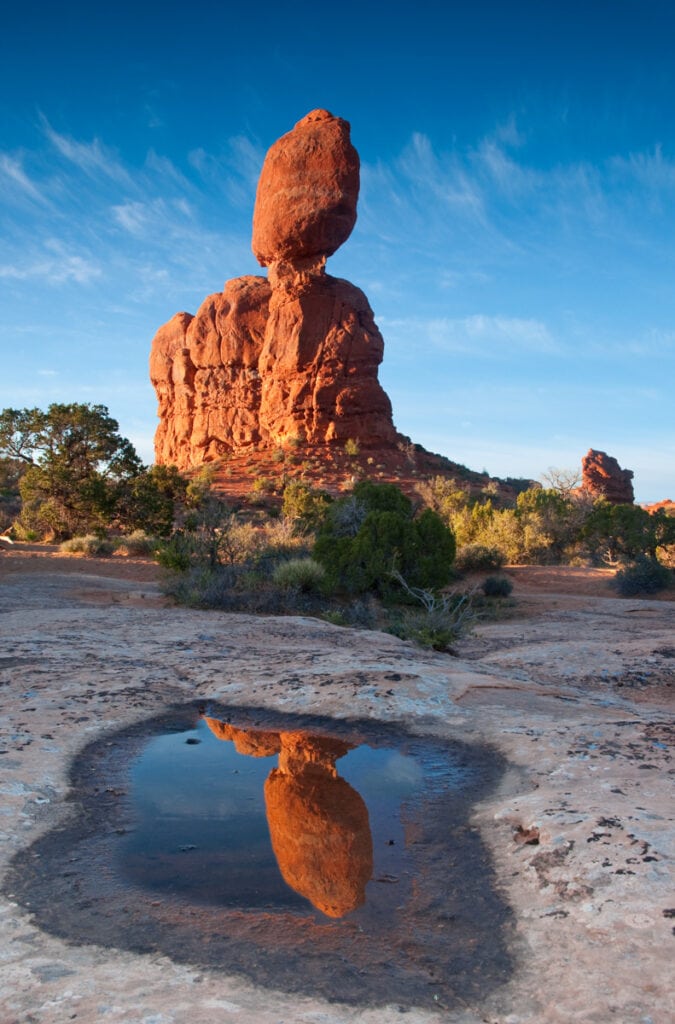
Finally, if you are up for it, hike to Delicate Arch, the most famous arch in the park.
The Delicate Arch Trail is a popular hike that is considered moderate, but note that it is quite steep and you’ll need to get over a bunch of rocks along the way.
March is the perfect time to do this hike, as there is no shade on the way, and it can get very hot in warmer months.
Where to Stay
Close to the park, you’ll find the Fairfield Inn & Suites by Marriott in Moab. It is located by the Colorado River, and is just five minutes from downtown Moab as well.
Book a stay here!
Suggested by Mary of Be Right Back by Mary
Looking for a rental car for your national park trip? Compare prices, find your car, and book on Discover Cars! They search numerous car rental agencies, from brand to budget, to offer you the best choices for your trip.
3. Joshua Tree National Park
Location: Southern California
Joshua Tree National Park, which straddles the Mojave and Colorado deserts, is a great stop on California or Southwest USA road trip itineraries.
You can visit Joshua Tree on a day trip, or stay for a longer time to explore more of the park and surrounding area.
March is the perfect time to visit Joshua Tree due to the pleasant weather in the park. Other than the week of spring break, the crowds are also usually lower in the park during the spring months, before the summer rush begins.
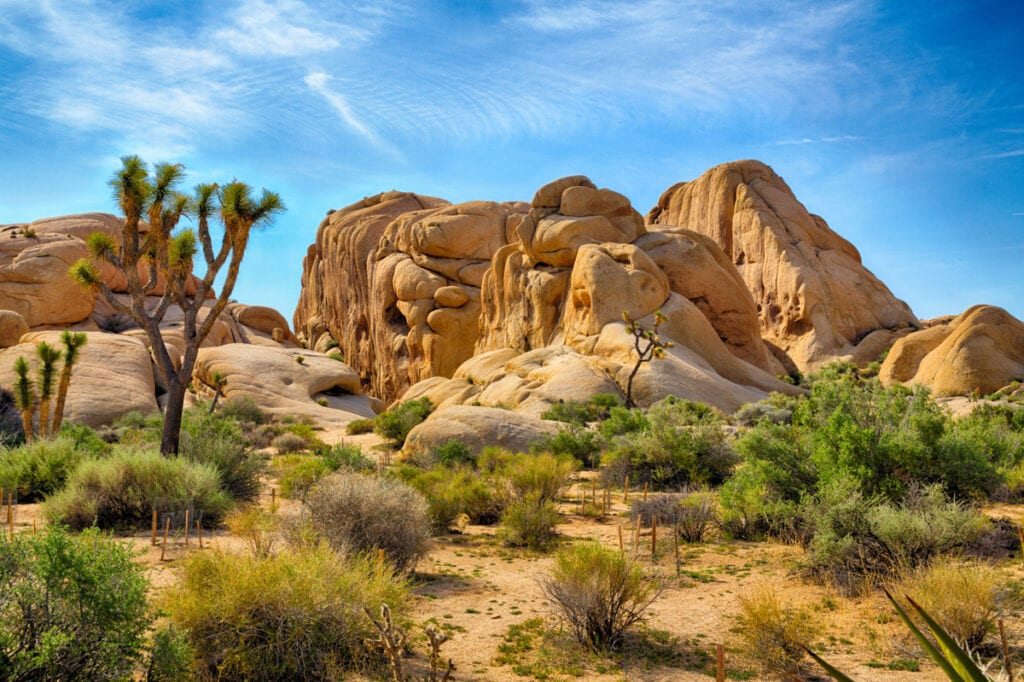
Joshua Tree gets very hot in the summer months, so if you want to hike, late fall to spring is ideal. That’s why Joshua Tree NP also features in our round-up of the best national parks to visit in January!
And in March, you may even catch a wildflower bloom in the park!
Weather in Joshua Tree in March: With highs in the mid-70s Fahrenheit and lows in the mid-40s, you’ll want to bring layers for early and late in the day, but you can enjoy hiking the park without being too hot or too cold.
Rain is highly unlikely with an average of 0 days of rain in March.
What to do in Joshua Tree National Park: When it comes to the best things to do in Joshua Tree in March, don’t miss the hike to Arch Rock. It is a short and easy hike through some beautiful rock formations, and it is a fun hike for the family.
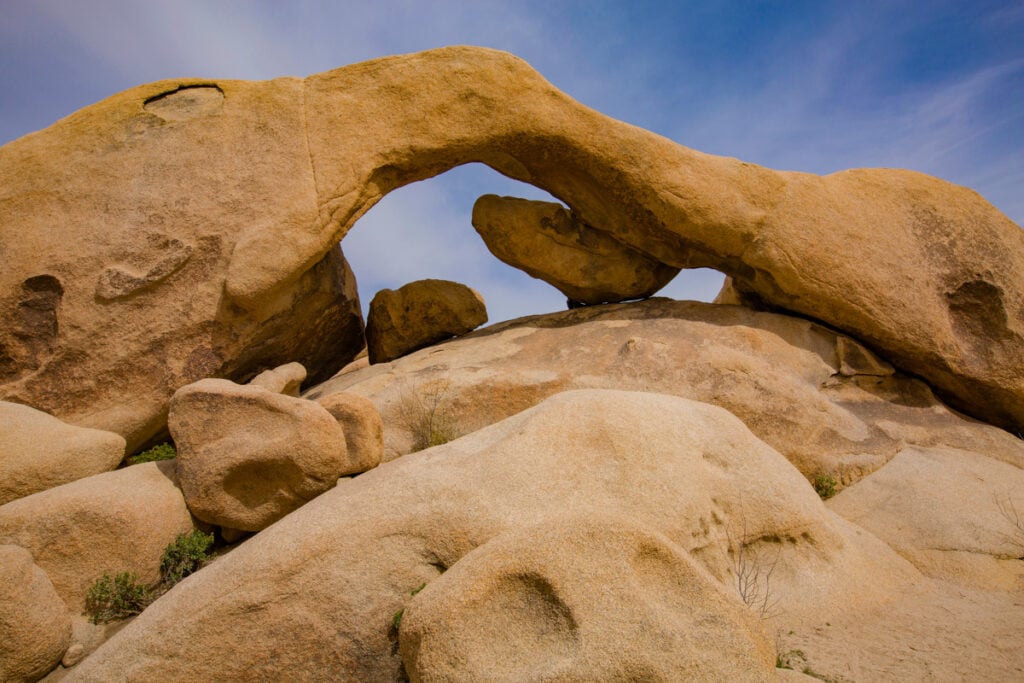
Make sure to also stop by the Cholla Cactus Garden, especially at sunrise, to see the sun shining through the cacti. The garden is best visited any time the sun is lower in the sky, but it’s a must even if you can only visit at high noon.
Barker Dam and Hidden Valley are two must-do family-friendly nature trails, with beautiful scenery.
You can also go off road on Queen Valley Road to see more of the Joshua trees for which the park is famous. This dirt road is fine for most vehicles, and it gets you off the beaten path and into the heart of Joshua Tree.
Another option if you don’t want to leave the paved roads is to tour Park Boulevard, entering at the North Entrance Station and driving to the West Entrance Station. You’ll see Joshua Trees peppering the landscape and you can even spot rock climbers along the road.
Where to Stay
There are many cute vacation rentals located near Joshua Tree, but if you want a hotel stay, try the Fairfield Inn & Suites in Twentynine Palms, near the North Entrance to the park.
Book a stay here!
Suggested by Christine of Live Love Run Travel
4. Big Bend National Park
Location: Texas
Located in the far western part of the state, Big Bend National Park offers stunning landscapes, from a meandering river to the desert floor and tall ridges and mountains.
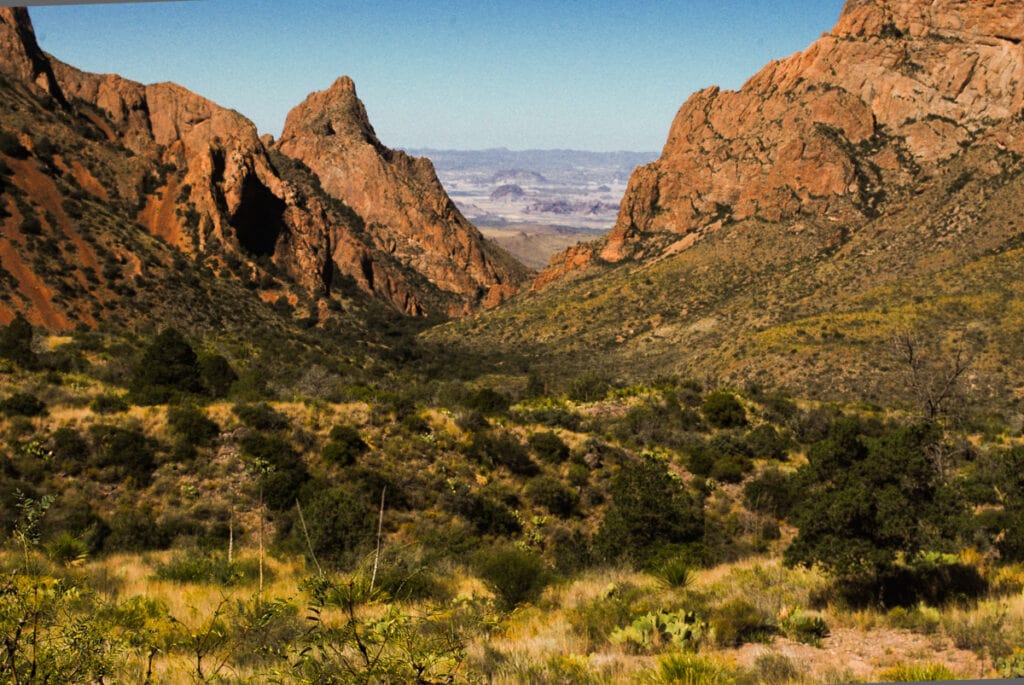
Its night skies are some of the darkest you can find anywhere!
The park is a place of great diversity, with numerous species of plants, animals, and birds. The rocks of Big Bend contain fascinating fossils that span 130 million years, including the the age of the dinosaurs.
March is a particularly wonderful time to visit, with pleasant weather and bluebonnets in bloom. It’s a popular spring break destination in Texas, so if you like it quieter, plan your visit outside of spring break week.
Weather in Big Bend in March: Daytime highs in the park tend to be in the mid to high 70s Fahrenheit, although it can get warmer on the desert floor and be cooler in the Chisos Mountains.
Nighttime lows drop into the high 40s and low 50s. Bring layers for early and late in the day!
It’s generally dry in Big Bend National Park in March.
What to do in Big Bend National Park: There are numerous scenic drives in the park, on both paved and unpaved roads. The drive from Maverick Entrance Station to Panther Junction offers gorgeous views of the desert and mountains, with wildflowers in March.
Off this road, also drive Chisos Basin Road, which is short but excellent for experiencing the ascent from the desert into the mountains.
March is an excellent time to hike in Big Bend, and you have options for hikes in the desert, in the mountains, or by the Rio Grande River. There are many short and easy hikes that will let you experience the landscapes up close.
The Window Trail is a popular 5.6-mile round trip moderate hike that takes you down to the Window pour-off that frames expansive desert views. The Window View Trail is just 0.3 mile, accessible, and offers views through the window.
Floating Santa Elena Canyon is a popular activity on the Rio Grande River. The canyon walls are dramatic, and you can choose to paddle upstream for a bit and float back, or do an overnight trip, which requires a permit.
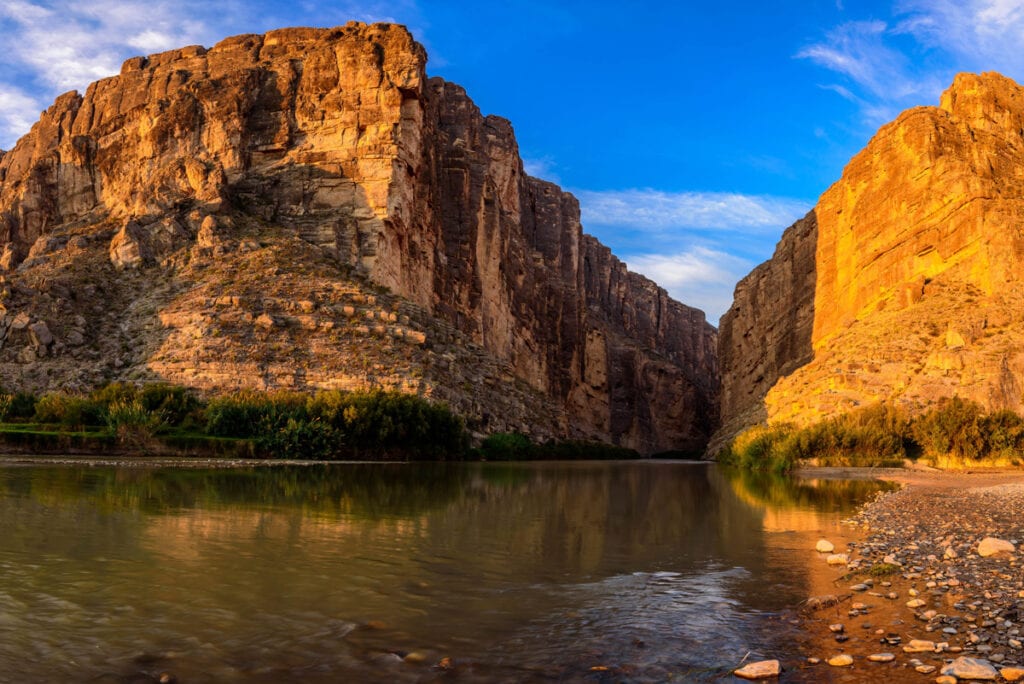
Observing the night sky is a must at Big Bend. The park offers interpretive programs or you can do it on your own, with a pair of binoculars.
Visit the Fossil Discovery Exhibit, located a few miles north of Panther Junction, to view specimens and walk the short trail that showcases the type of rock that houses fossils in the region.
Where to Stay
Chisos Mountain Lodge is located inside the park and open year-round.
Lajitas Golf Resort in Terlingua is located close to the park and offers a full-service spa, gourmet cuisine onsite, pool and comfortable rooms. The resort features lovely mountain views.
Book a stay here!
Suggested by us
5. Saguaro National Park
Location: Arizona
March is the tail-end of the peak season at Saguaro National Park. The weather is still comfortably warm, and you’ll see some species of cactus starting to bloom.
Divided into two sections — the Tucson Mountain District (West) and the Rincon Mountain District (East), the park is famous for the many mature saguaro cactus plants you can see here.
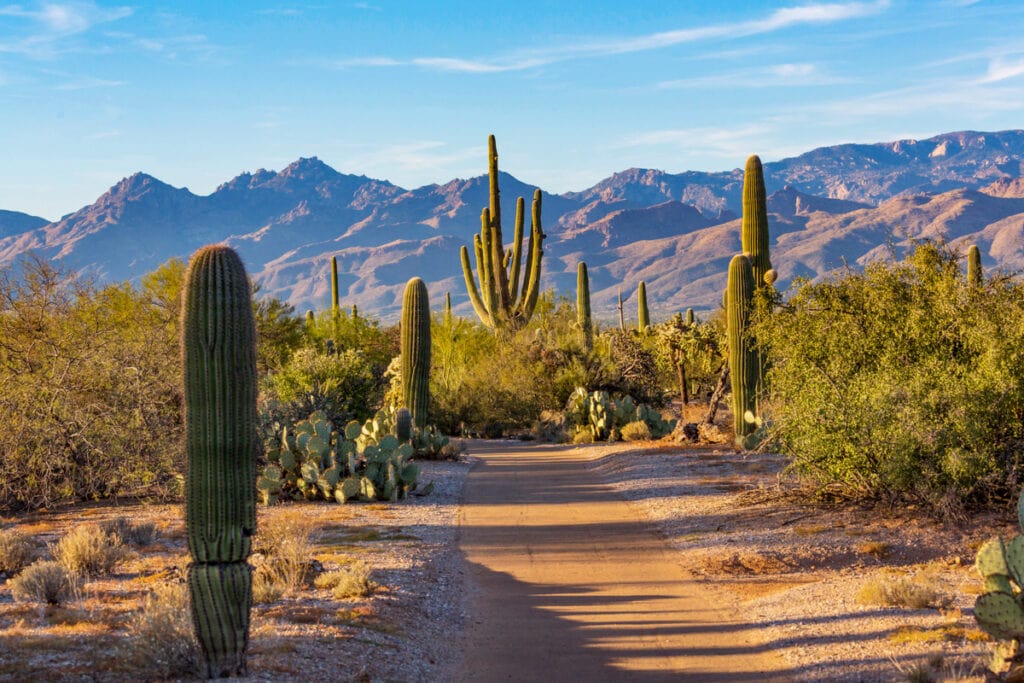
An adult saguaro can be as tall as 50 feet: it’s a spectacular sculptural plant that can live up to 250 years!
Saguaro weather in March: Daytime highs in Saguaro National Park in March tend to be in the mid to high 70s: plan your hikes for early and late in the day for the most pleasant weather.
Nighttime lows drop into the mid 40s.
Expect lots of sunshine and generally dry weather in March.
What to do in Saguaro National Park: Hiking is the best way to get up close to the saguaro and other cacti in the park.
The Valley View Overlook Trail in the West District is just 0.8-mile round trip but offers a great view of the forest of saguaro from the top. The trailhead is located along the scenic Bajada Loop Drive.
Also in the West District, walk the short trail to view the gorgeous Signal Hill petroglyphs. Created by the Hohokam people many centuries ago, many of the petroglyphs here can be viewed and photographed from the trail.
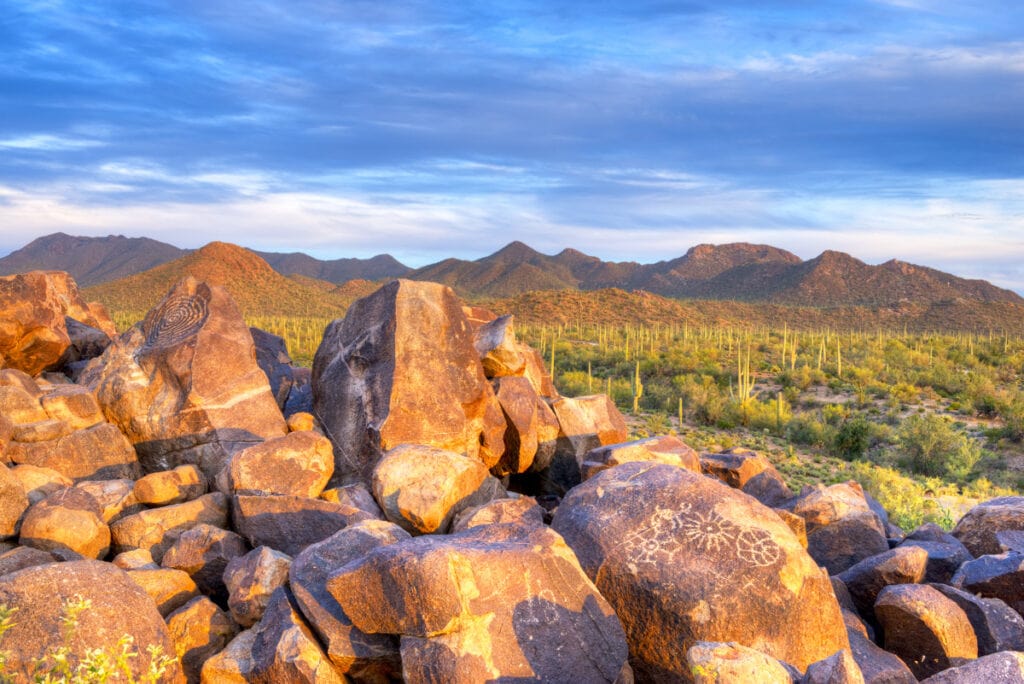
The Cactus Forest Loop Drive is a scenic 8-mile loop in the East District. The drive offers several overlooks, if you want to stop for photos.
Hike the Mica View Trail in the East District for nice views of the Rincon Mountains and the city of Tucson. Keep your eyes peeled for wildlife and birds. The trail is flat, and about 2 miles round trip.
Something to keep in mind when planning your saguaro National Park itinerary: it takes about an hour of driving through the city of Tucson to get from one district to the other.
Where to Stay
The Omni Tucson National Resort is located about a 15-minute drive from the West District and offers spacious rooms (and bathrooms), a pool, and onsite spa.
Book a stay here!
Suggested by us
6. Channel Islands National Park
Location: California
Channel Islands National Park consists of five islands off the coast of Southern California: Anacapa, Santa Cruz, Santa Rosa, San Miguel, and Santa Barbara.
Although relatively small in size, the Channel Islands offer an incredible variety of activities and attractions for visitors to enjoy.
March is the perfect time to visit because of the weather and wildlife.
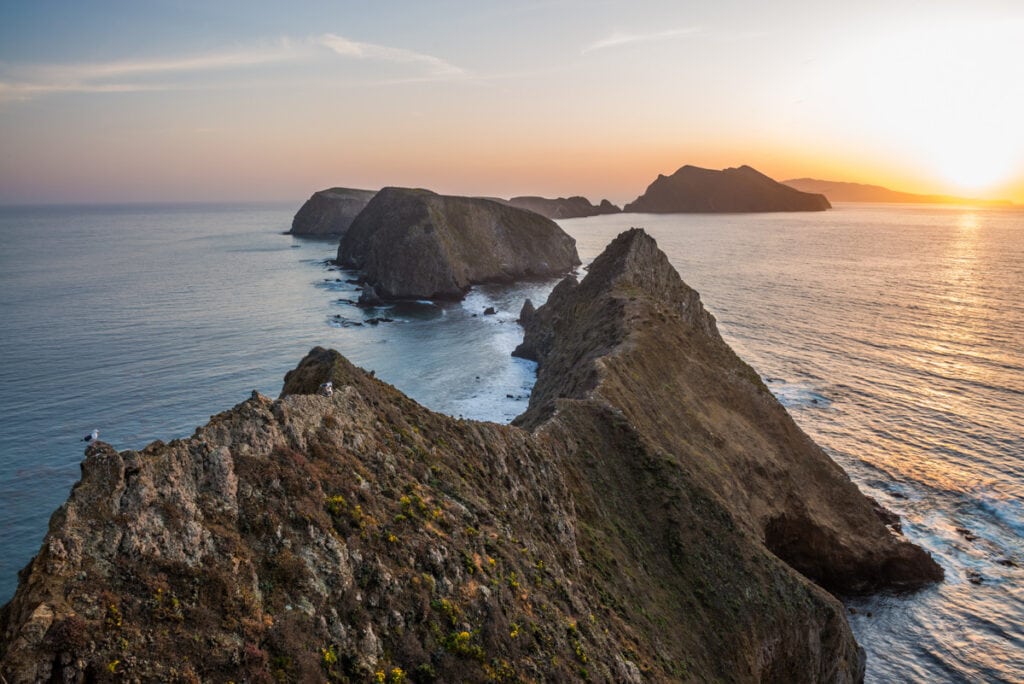
The island wildflowers are in peak bloom and the islands are still green just before the heat of summer turns everything brown. Birds have just begun nesting and you might even spot island fox pups.
Channel Islands weather in March: In March, temperatures are becoming warmer averaging in the low 60s and 70s. Ocean temperatures range in the 50s. Rainfall is occasional but fog can be common in the late spring.
What to do in Channel Islands National Park: You will need to pick which island to visit before you determine your Channel Islands itinerary. The top four things to do in March are camp, hike, kayak, and birdwatch.
If you enjoy hiking, Anacapa Island is the smallest and easiest island to hike, with one trail that runs across the island. Once you go up the steps from the landing cove, you’ll find the trail, a figure eight over rolling hills.
The views along the hike are spectacular, and you’ll see the last permanent lighthouse that was built on the US west coast.
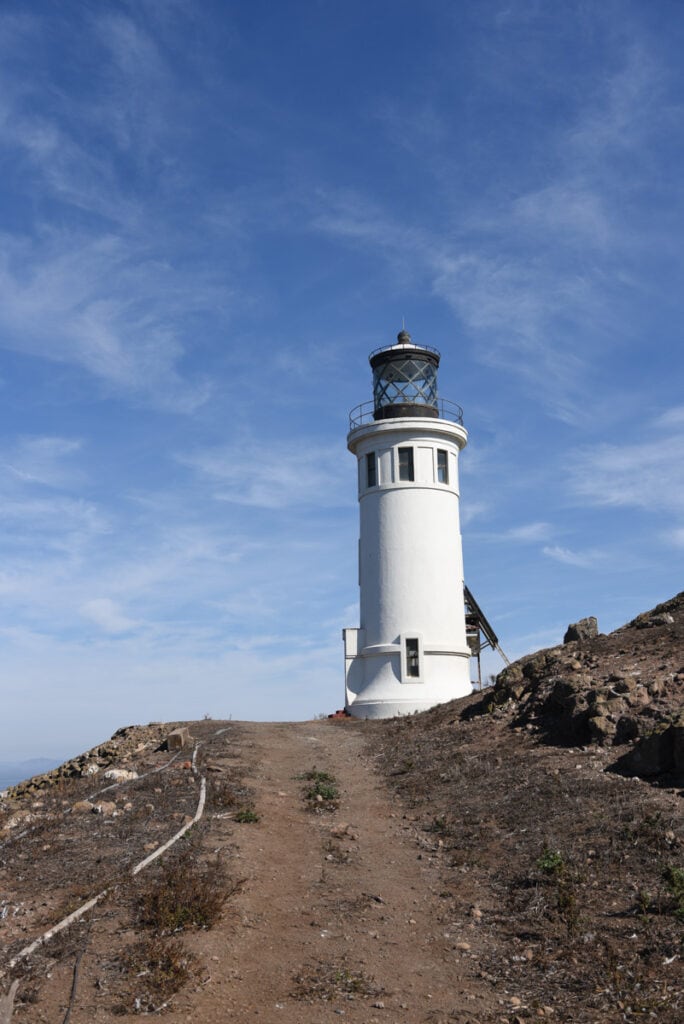
Santa Cruz Island is the largest island in the national park and is a great place to go camping.
There are several beaches on the island, where visitors can go kayaking. Just be sure to bring your own kayak, which you can rent from the ferries that bring you to the island.
Santa Barbara Island is an excellent place for bird watching as it is home to several endemic species of birds. Look for the island scrub jay, black oystercatcher, red-necked phalarope, and more.
Where to Stay
There are no hotels or rentable facilities on any of the islands, but campsites are available for reservation. The most popular campsite is Scorpion Ranch on Santa Cruz Island.
Most people visit Channel Islands National Park for the day. Island Packers Cruises offer trips to the islands by ferry.
Suggested by Cassie of Cassie’s Compass
7. Guadalupe Mountains National Park
Location: Texas
Located just south of the New Mexico border in western Texas, Guadalupe Mountains National Park contains the highest point in Texas. The Guadalupe Mountains in the park are surrounded by the Chihuahuan Desert.
March is the start of the busy spring season for the park, so book early if you want a site at a developed campground in the park.
There aren’t too many roads in the park, so expect parking lots to fill up early on spring weekends, and arrive early.
You’ll find lots of wildflowers in bloom in the park in March!
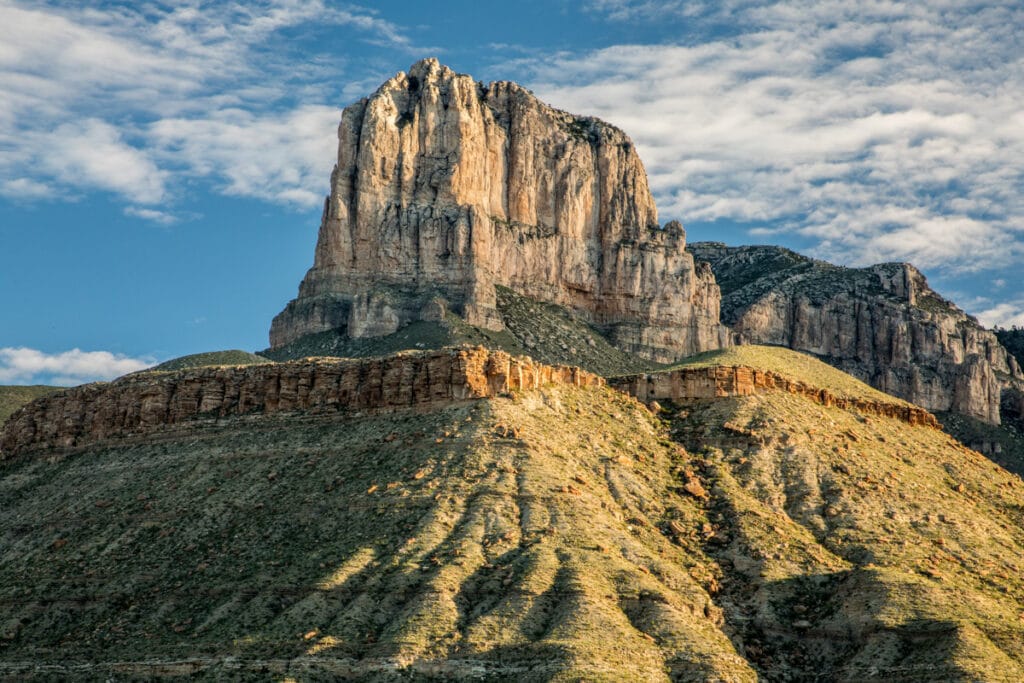
Guadalupe Mountains weather in March: With daytime highs in the low to mid 60s Fahrenheit and nighttime lows in the high 30s and low 40s, you’ll need to bring layers for early and late in the day.
At higher elevations in the park, you’ll find that the temperatures are somewhat cooler.
Expect March to be mainly dry, with little to no rainfall.
Note that it can be very windy in the park in the spring.
What to do in Guadalupe Mountains National Park: There are no roads that go through the park, but you can do some scenic drives just outside the park.
Along U.S. Highway 62/180, which provides the main access to the park, you’ll find the must-stop Guadalupe Peak viewpoint. Another must-stop spot is the El Capitan viewpoint: El Capitan is a striking limestone cliff that’s one of the top landmarks in the park.
From Pine Springs, the two-hour drive to Dog Canyon offers fabulous views of the Guadalupe Mountains and the Chihuahuan Desert.
There are about 80 miles of trails in Guadalupe Mountains National Park, ranging from easy to challenging. You can also go backpacking in the wilderness.
The hike to “the Top of Texas,” or Guadalupe Peak, is the bucket-list day hike in the park. The trail is 8.5 miles round trip and very strenuous.
The Pinery Trail is an easy walk through the desert to the ruins of Pinery Station, on the Old Butterfield Stagecoach route. The trail is paved and accessible.
If you enjoy birdwatching, you’ll want to walk the short trail to Manzanita Spring from Frijole Ranch. The pond is fringed by reeds, making for a pretty photo op. You can continue beyond to picturesque Smith Spring for more birding!
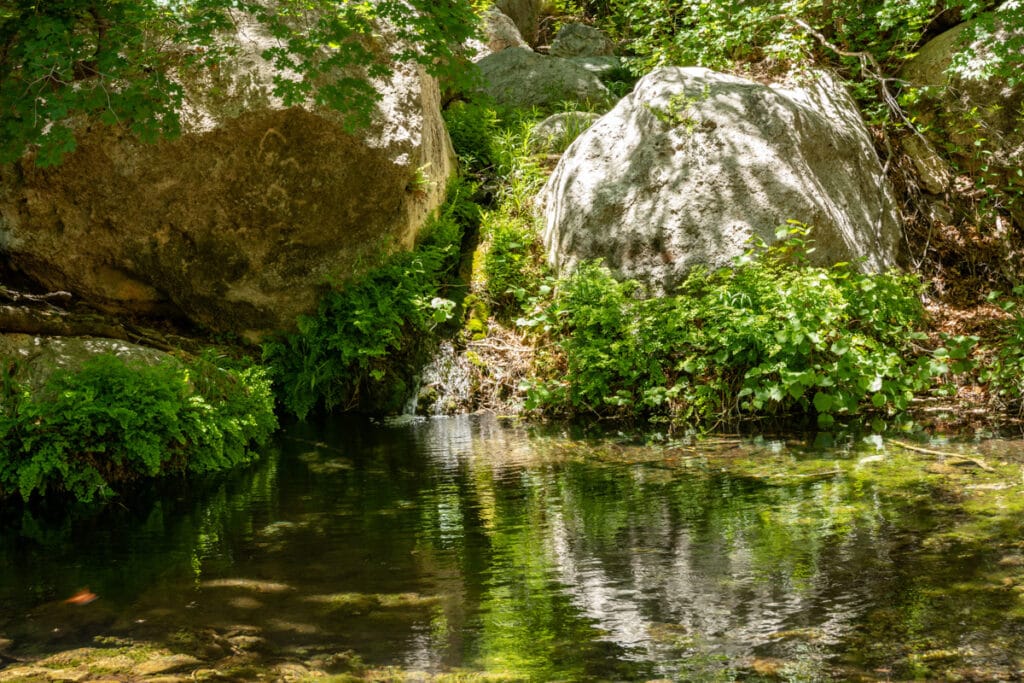
Where to Stay
There is no lodging in the park. Your nearest options are Dell City in Texas or Whites City in New Mexico.
Karbani Inn in Carlsbad is located about a 40-minute drive from Guadalupe Mountains National Park. It is also convenient if you want to visit Carlsbad Caverns National Park!
Book a stay here!
8. Pinnacles National Park
Location: California
Pinnacles is a small national park located in central California’s Salinas Valley: it encompasses just 26,000 acres.
Named for the unique mountainous geological formation in the center of the park, Pinnacles actually drifted up the San Andreas Fault to its current location. You can see the rest of the original formation 195 miles south!
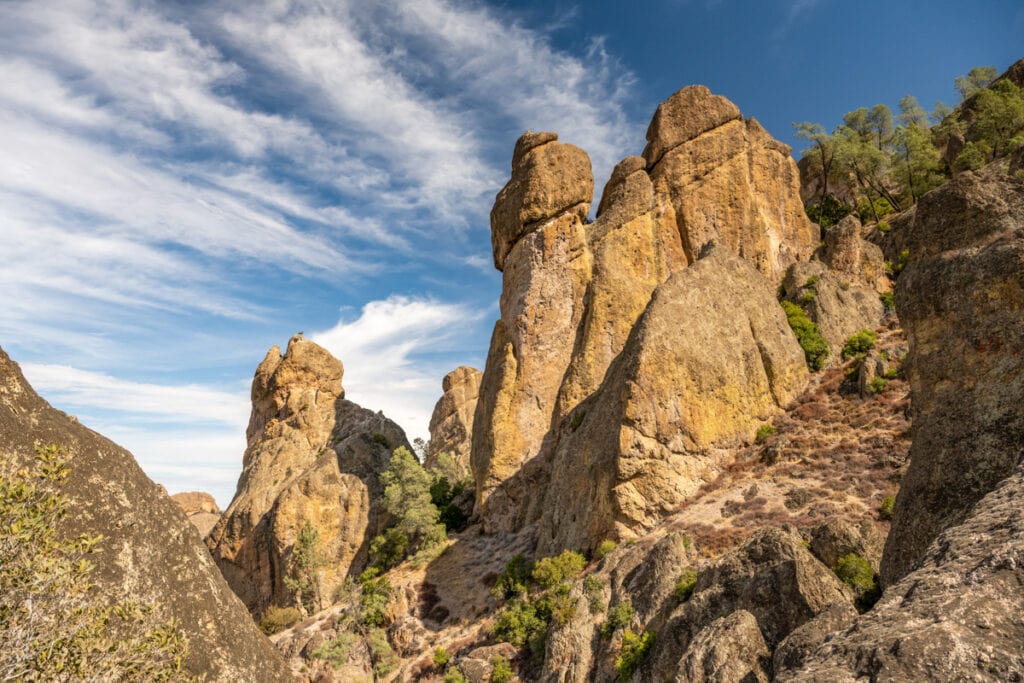
Pinnacles National Park is perhaps best known for its wildlife habitat, especially for the once seriously endangered California condor.
The park sits in the middle of a pretty rural section of California. It’s a great location to add to your California itinerary, especially if you’re already planning to visit Monterey and Big Sur.
Since much of Pinnacles, especially on the High Peaks Trail, offers very little shade, it’s best to visit outside of the brutally hot summer months.
Pinnacles weather in March: With an average daytime high of 67.5 degrees Fahrenheit, March is an ideal time of year to visit and explore the park.
Winter rains start to taper off in March. Wildflowers start to bloom along the trails and you might even spy nesting condors or golden eagles.
What to do in Pinnacles National Park: With over 30 miles of hiking trails, you have ample opportunity to glimpse a condor, or one of the other 140+ species of birds in the park.
Since there is no road that runs through the park, hiking is the way to get up close to the volcanic spires, the signature feature of the park. Trails in the park range from easy to challenging.

In addition to hiking, people also enjoy rock climbing in Pinnacles, although the park service often closes off sections to protect nesting birds.
You can also explore the park’s talus caves, including Bear Gulch Cave, which is home to a large Townsend’s big-eared bat colony.
And don’t forget birding. You never know what majestic bird might be soaring overhead at Pinnacles!
Where to Stay
For the best lodging options, plan to stay in Monterey, about an hour drive away from the park’s west entrance, or plan to camp in the park.
Casa Munras Garden Hotel & Spa in Monterey is located in Old Town Monterey, convenient to shopping and dining. The hotel offers an outdoor pool and comfortable rooms.
Book a stay here!
Suggested by Ada of Beyond Yellow Brick Blog
9. Badlands National Park
Location: South Dakota
Known for its rugged and austere charm, Badlands National Park spans an incredible 270,000 acres of land and is one of the best national parks in South Dakota.
And the land here is so wonderfully diverse that it includes vast canyons, mesmerizing layered rock formations, and more.
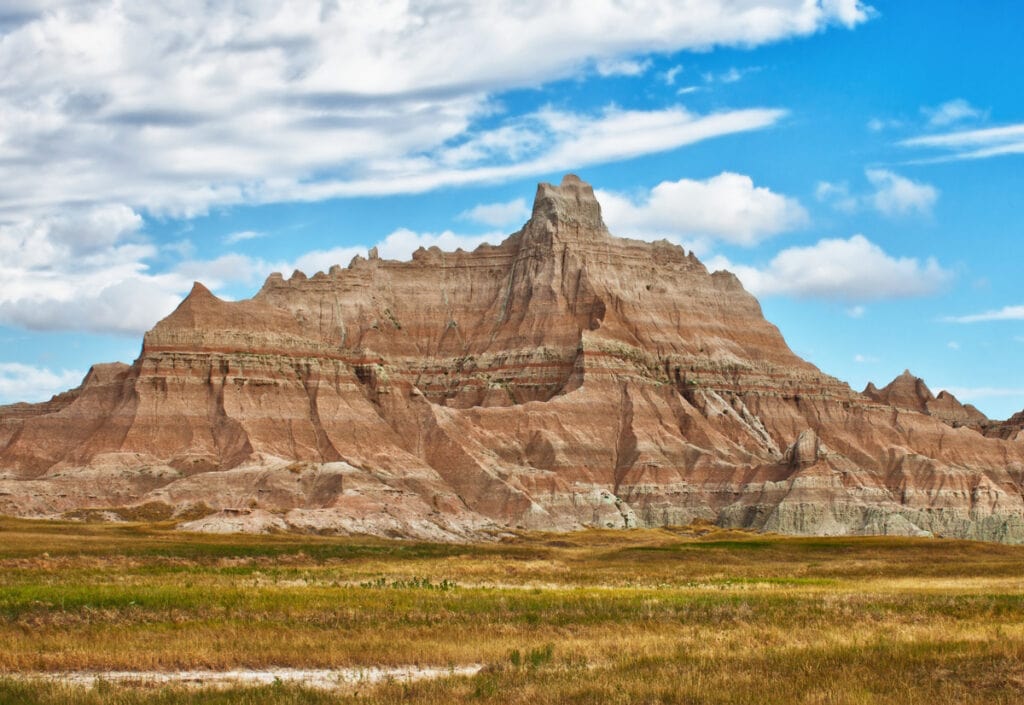
March is an excellent time to visit: it’s shoulder season, and you most likely have much of the park to yourself. Accommodations will also be less expensive.
Badlands weather in March: Daily highs in Badlands National Park are fairly pleasant in March, at around 56 degrees Fahrenheit .
Nighttime lows do fall to below freezing, so make sure you layer up after dark.
You also won’t have to worry about precipitation since the Badlands are infamous for being incredibly dry, receiving less than 16 inches of rain per year, mostly in the summer.
The park does see some snow in the winter.
What to do in Badlands National Park: Upon arrival, head to the visitor center, where you can walk a local boardwalk that will teach you all about fossils found in the area.
In the South Unit of the park, drive along the perimeter of the park and enjoy sweeping panoramas.
In the North Unit, head to Sage Creek Rim Road to get a closer look at local wildlife. Note that Sage Creek Rim Road is dirt and can be rough after a storm.
Drive Badlands Loop Road (Highway 240), where you will find striking landscapes and informational exhibits. Keep an eye out for local wildlife, including prairie dogs, herds of bison, and big horn sheep.
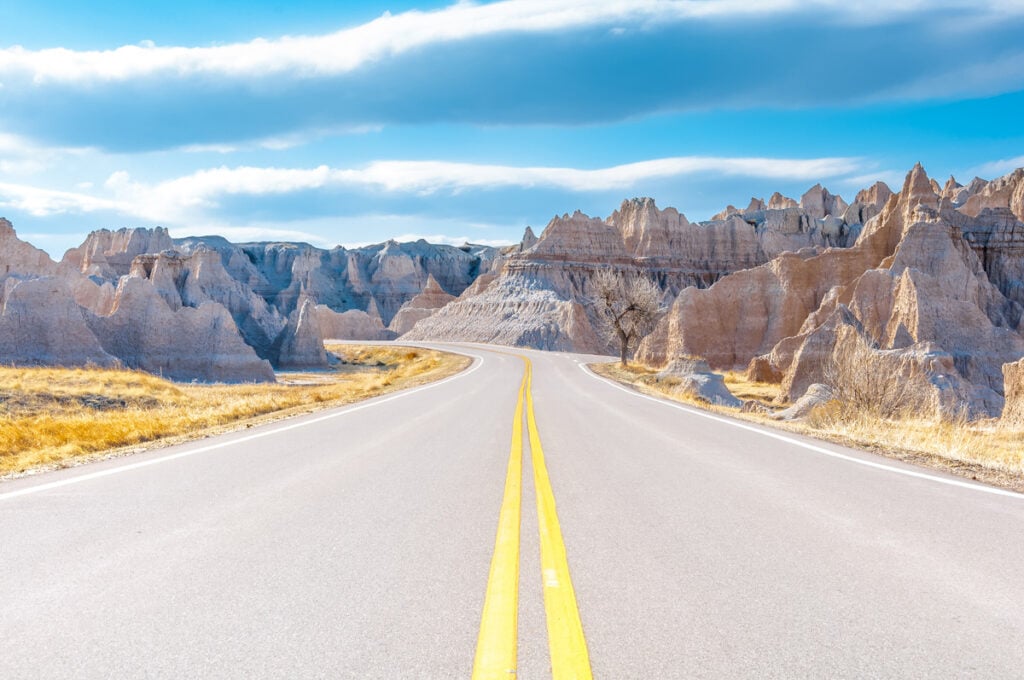
Don’t leave without getting up early to photograph the sunrise at Big Badlands Overlook. The Door Trail, Norbeck Pass, Dillon Pass, and Panorama Point are other great options for sunrise.
If you prefer sunset, head to Pinnacles Overlook or Conata Basin Overlook, or check out the Bigfoot Pass Picnic Area or the Norbeck Pass area.
Where to Stay
Stay at the well-appointed Best Western Plains Motel in Wall, a short drive from Badlands National Park. Rooms are spacious and beds comfortable.
Book a stay here!
Suggested by Linda of Midwest Explored
10. Great Smoky Mountains National Park
Location: Tennessee and North Carolina
The Great Smoky Mountains National Park is the most visited national park in the United States. The park is known for its stunning views and abundant wildlife.
Spring is a great time to visit if you’re looking to avoid the crowds, as it’s typically the least busy time of year for this insanely popular national park.
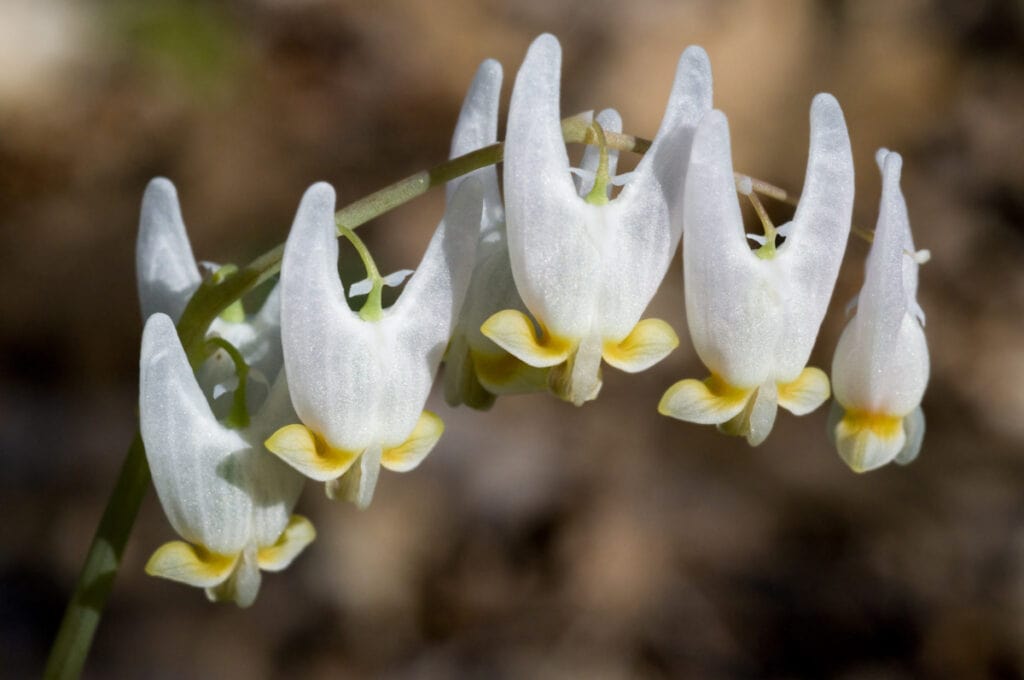
Accommodations tend to be cheaper at this time of year as well.
Weather in Great Smoky Mountains in March: The weather in the park starts to warm up in March, but it’s important to be aware that there can still be some cold days, so come prepared with layers.
The average high temperature in March is 61 degrees Fahrenheit, and the average low is 34 degrees Fahrenheit. Higher elevations in the park are cooler by several degrees.
The park may see some snowfall (especially in the higher elevations) or rain in March.
What to do in Great Smoky Mountains National Park: One of the best things to do in Great Smoky Mountains National Park in March is to view the wildflowers.
The park has over 1,500 different types of flowering plants, and many of them are at their peak during March and April.
Another great activity to do in the park is to go hiking. There are plenty of trails from which to choose. The Alum Cave Trail is a popular choice, and it offers breathtaking views of the mountains.
The park contains numerous beautiful waterfalls. While some of the falls are accessed via hikes, others can be seen from overlooks along roads. You can drive to Meigs Falls, the Sinks, and Place of a Thousand Drips (what a cool name!).
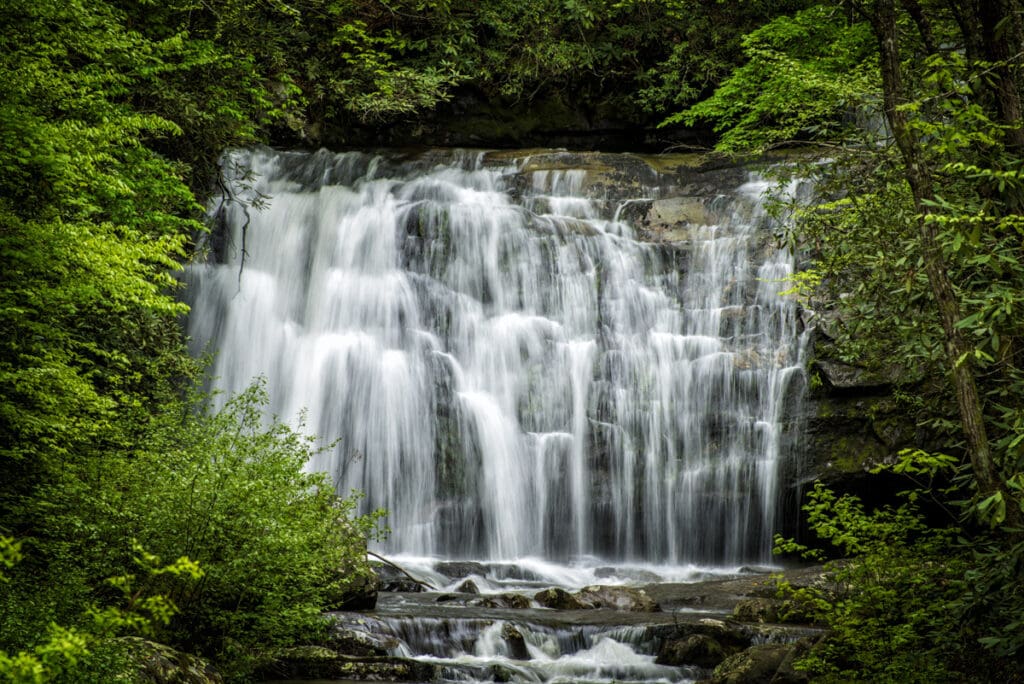
If you visit early in the month, or during a particularly cold spell in March, you’ll see that some of the falls are frozen!
If you’re interested in wildlife, then you’ll be happy to know that female bears with newly born cubs usually come out of their winter dens in late March. This is a great time to see the cubs, as they’re still with their mother for the first 18 months or so.
Where to Stay
Stay at the Margaritaville Resort Gatlinburg, located close to Great Smoky Mountains National Park. The highly-rated resort offers a seasonal outdoor pool and comfortable rooms.
Book a stay here!
Suggested by Melodie of Travel Must Dos
11. Olympic National Park
Location: Washington State
Olympic National Park, one of the great national parks in the west, offers one of the most diverse landscapes in the U.S. National Park System, with soaring mountains, dramatic beaches, and lush rainforests.
No wonder it’s one of the bucket-list places to visit in the Pacific Northwest!
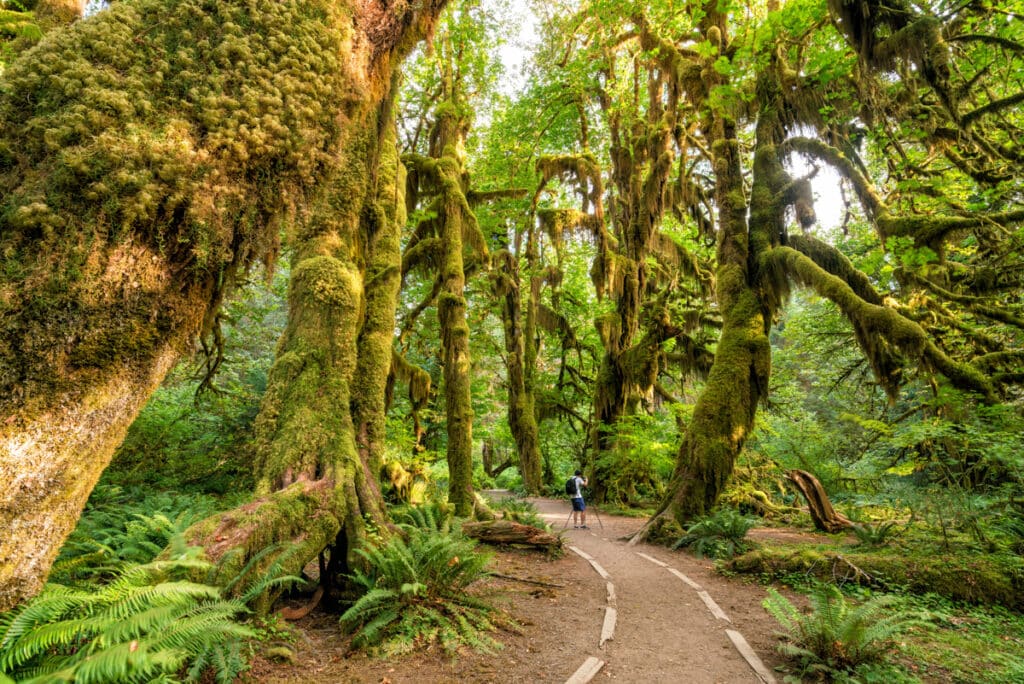
Olympic weather in March: While its proximity to the coastline ensures that it never gets too cold along the park’s lower elevations, temperatures in March start warming up from the winter chill, with average highs in the mid-50s Fahrenheit.
Plus, with all of the park’s springtime rain (this is the Pacific Northwest, after all!), the park’s forests will look their most vibrant.
What to do in Olympic National Park: Kick off your visit at the Hoh Rainforest, a UNESCO Biosphere, full of primeval ferns and trees dripping with moss.
Here, you can walk along the Hall of Mosses, one of the best hikes in Olympic National Park, where you can gaze up at the fir trees soaring almost 300 feet overhead.
Nearby, you’ll find some of the most stunning beaches along the Pacific coastline, like Ruby Beach, with craggy sea stacks towering out of the water. Plan your visit for sunset: you won’t be disappointed!
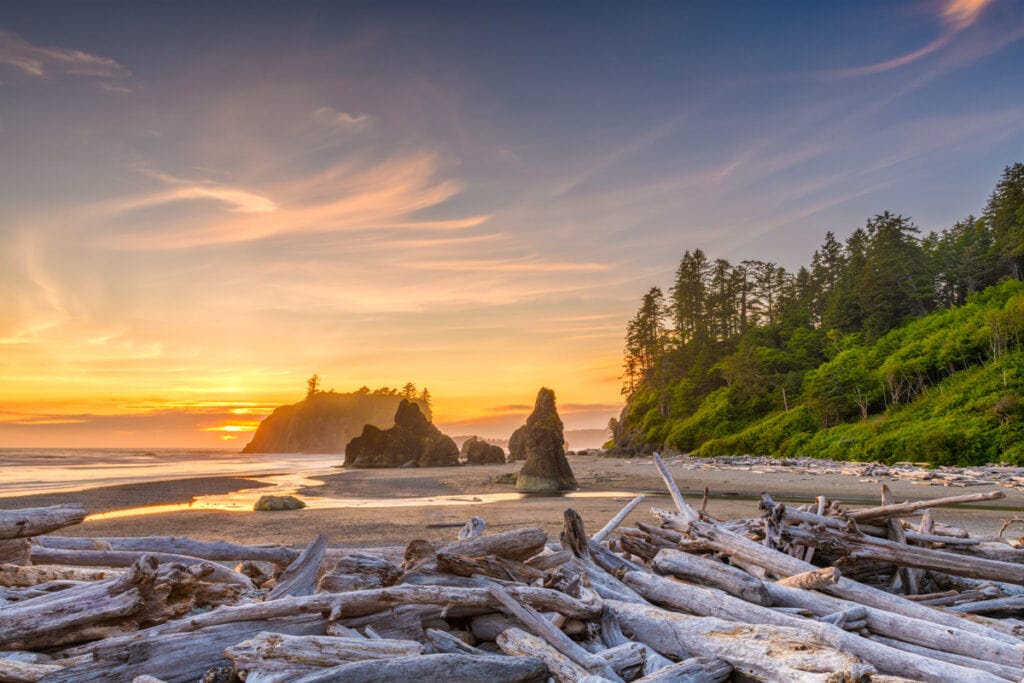
One of the coolest things about visiting Olympic National Park in March is that you can still find snow at higher elevations, like at Hurricane Ridge at the very top of Mount Angeles.
You’ll find snowshoeing trails, a tubing hill, and even a small ski area, all with the backdrop of the stunning Olympic Mountains.
Where to Stay
Right at the foot of Mount Angeles, you’ll find Port Angeles, which is the perfect base for your time in Olympic National Park.
Consider a stay at the Olympic Lodge, which offers an outdoor hot tub to warm up after all your adventures in the park.
Book a stay here!
Suggested by Jessica of Uprooted Traveler
12. Zion National Park
Location: Utah
Zion is the most popular US national park in Utah, with over 3.5 million visitors annually.
The photogenic red rock canyon offers Instagram-worthy views around every corner. With sister parks Arches and Bryce nearby, Zion is a perfect stop on a Utah road trip.
March is southern Utah’s shoulder season. It is a great time to explore Zion without the summertime crowds.
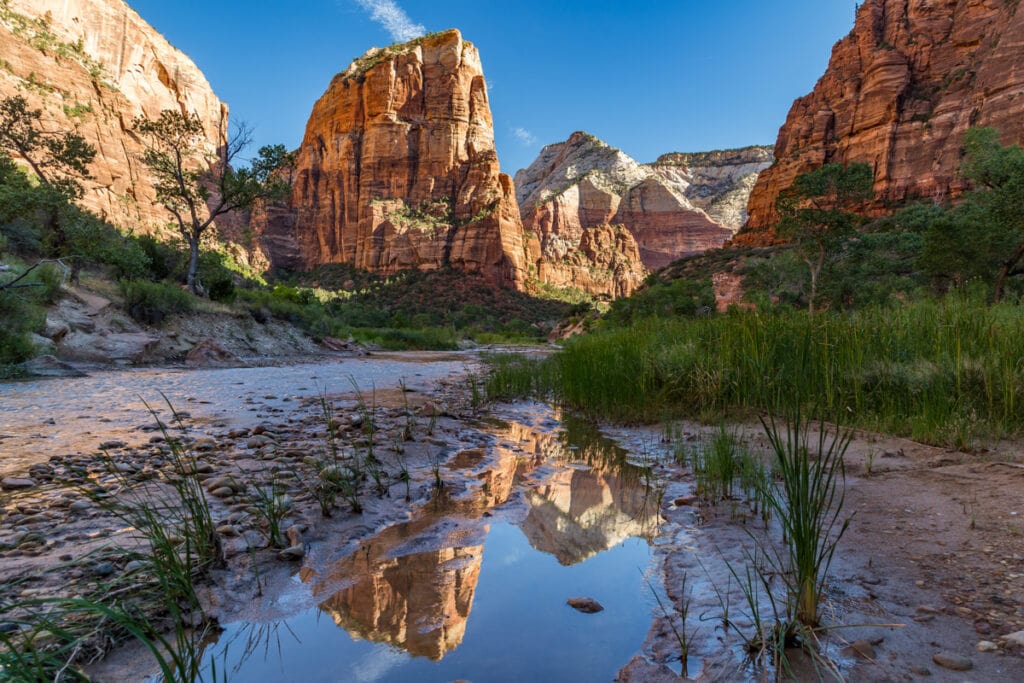
Mild weather means you can layer and enjoy comfortable days with the chance of seeing a light dusting of late-season snow at higher elevations. Additionally, shorter spring days mean better photograph lighting due to less harsh sunlight.
Weather in Zion in March: March daytime temperatures in Zion hover in the high 50s Fahrenheit, with nighttime lows in the 30s. Bring layers!
Late-season snowfall is possible at Zion’s higher elevations.
What to do in Zion National Park: A sunrise hike on Canyon Overlook Trail is the perfect way to start a March visit to Zion.
The tiny parking area means the Canyon Overlook Trail is not accessible during busier times of the year. The 1-mile trail is beginner friendly and leads to an epic overlook.
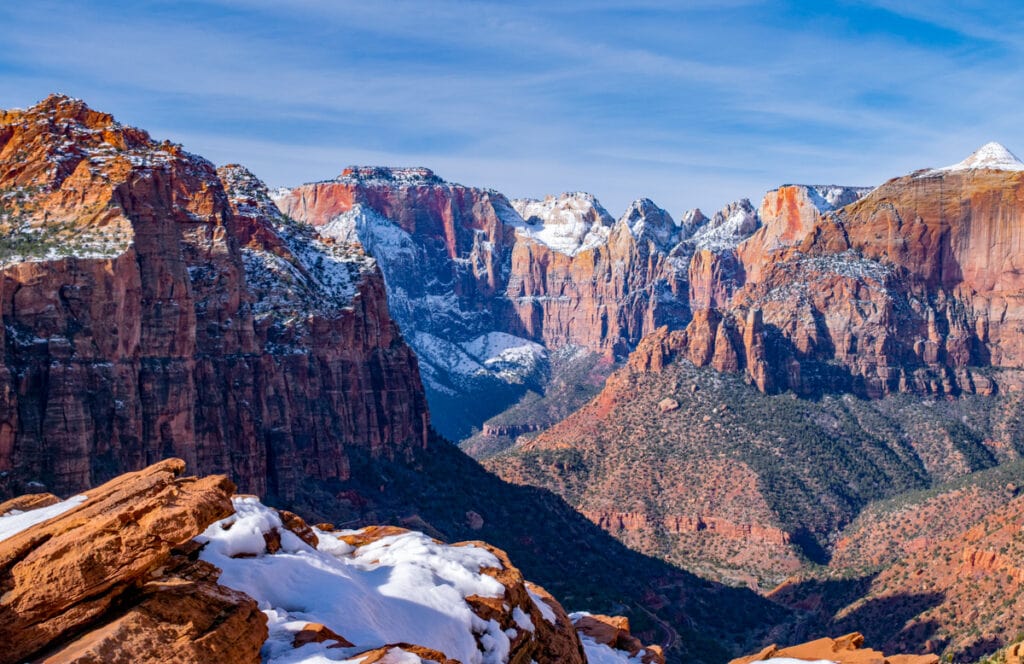
Angel’s Landing is one of the bucket list hikes in Zion for most visitors. The strenuous 5.4 mile roundtrip hike requires over 1,400 feet of elevation gain and passing a narrow chained section with steep drop-offs on both sides.
However, due to its popularity, the hike requires a permit year-round. Since March is less crowded in the park, your chances of winning the coveted Angels Landing permit lottery are greater in this month.
Check with park rangers before you head to the trail, and be prepared to turn back in the event of inclement weather or slick conditions.
Pa’rus Trail leads from the visitor center and Watchman campground to Zion Canyon Scenic drive. It is a paved trail open to bicycles and pedestrians, with nice canyon views. Pa’rus Trail is the only dog friendly trail at Zion National Park.
Zion Canyon Scenic Drive is the main road through the canyon. From March to November, shuttle bus or bicycle are the best ways to access the scenery and hiking along the scenic drive.
When the Zion shuttle is running, Zion Canyon Scenic Drive is closed to private vehicles, but you can still you can drive the Zion-Mt. Carmel Highway, the Kolob Terrace Road, and Kolob Canyons Scenic Drive (if it is open) in your own vehicle.
Where to Stay
Watchman Villas are well-appointed condos within walking distance of the Springdale Zion park entrance. They offer hotel-like amenities with the comforts of a vacation home.
Book a stay here!
Suggested by Kara of Trying to Unwind
MORE INSPIRATION FOR US NATIONAL PARKS TRAVEL
Planning more visits to US national parks?
Discover the most exciting national parks in the west or plan a national parks road trip from Las Vegas: you’ll find more than a dozen national parks near Vegas to explore, from Utah’s Mighty 5 to the Grand Canyon.
If you want national park choices by season, we have an extensive round-up of national parks to visit in the summer, plus national parks to visit in the fall, and US national parks that are perfect for winter visits.
Visiting a US national park in another month? Check out our other round-ups of the best national parks to visit by month!
- Best National Parks to Visit in January
- Best National Parks to Visit in February
- Best National Parks to Visit in April
- Best National Parks to Visit in May
- Best National Parks to Visit in June
- Best National Parks to Visit in September
- Best National Parks to Visit in October
And if you haven’t bought your National Parks Pass yet, get it now!
Buy online at REI.
Did you find this article informative? Pin it for later reference!
